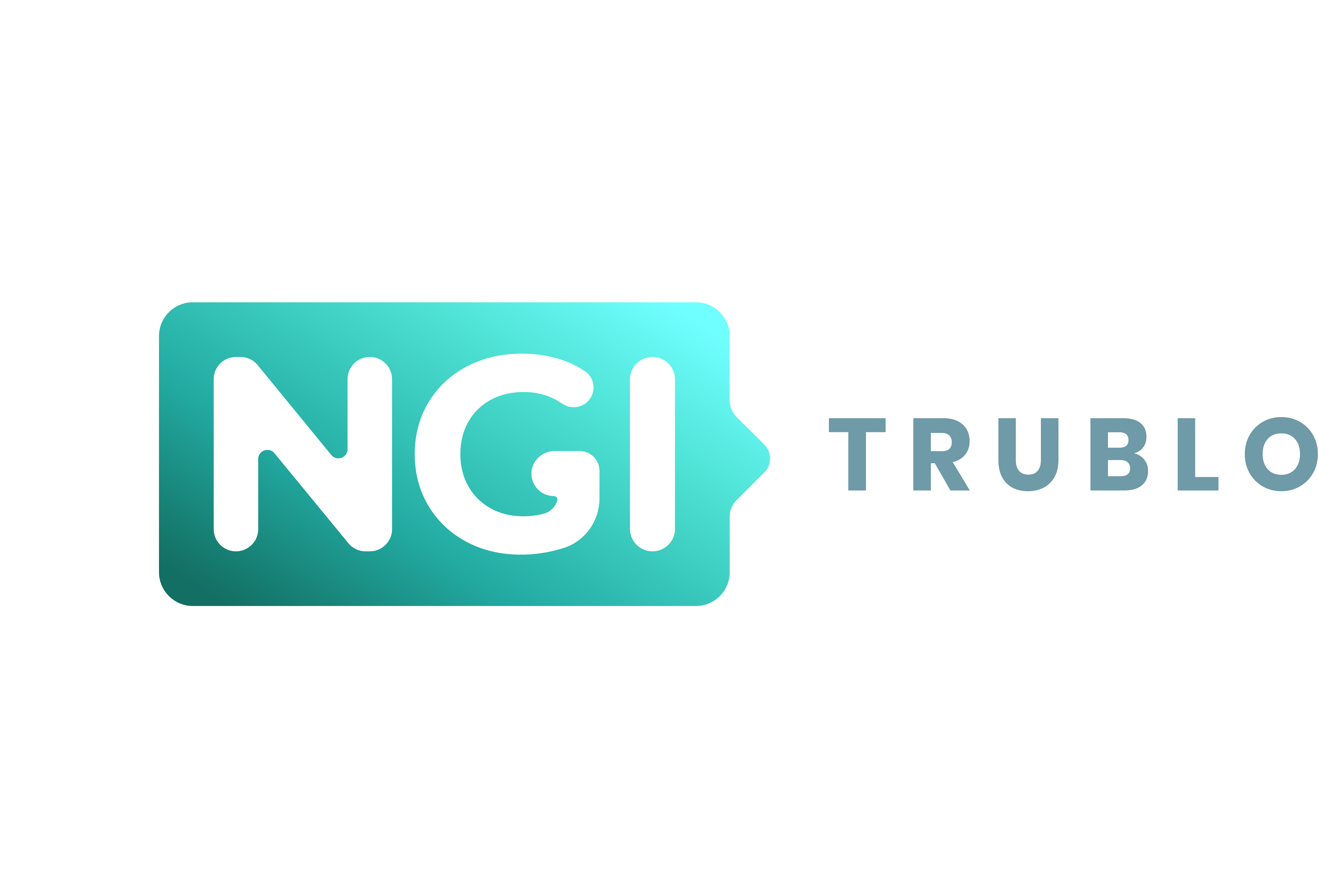
TruBlo Newsletter #29
Contents:
#29: Risks of a cyberwar • Being targeted by NSO • Google “Topics” to replace cookies • Three things web3 should fix in 2022 • Meta builds a supercomputer • IMS want El Salvador to stop accepting Bitcoin • Optimism for Bitcoin
TruBlo NEWSLETTER • Trustable content on future blockchains
January 28, 2022
TruBlo Newsletter #29
A weekly update from the intersection of trust, content and blockchain
Estimated reading time: 8 minutes, 24 seconds. Contains 1682 words.
- Share: Share this newsletter with colleagues or friends
- Social: Follow us on Twitter for direct interactions or questions
PROJECT UPDATE
TruBlo Open Call #3 is now open
Since yesterday the TruBlo Open Call #3 accepts applications. We updated our FAQ and downloaded all needed documents as a .zip file. Check out the application page to learn more. A total of 20 projects can receive funding of up to €175,000. The deadline for applications is March 30, 2022.
Blockchain Weather for Week 4, 2022 (January 24-30)
In each edition, we aim to summarise the current sentiment for crypto, blockchain and web3 similar to a weather report:
Cold, cold winds from ahead. Temperature has fallen steeply for months and specifically last week. Some predict a long, cold winter. Others are more optimistic and believe that this really cold period will last only weeks or months.
TRUST
A cyberwar against Ukraine could affect the whole world
We all implicitly trust that the internet will be there for us tomorrow, as well as all other systems, from water to electricity. But if such infrastructure becomes a target for cyberwar, this will affect not only one specific country. Instead, it would be hard to control that malware would affect other systems. The MIT Technology Review has a longer article collecting views on the current situation. It says: A cyberwar against Ukraine will not be limited to just one country.
“Ukraine has been on the receiving end of aggressive Russian cyber operations for the last decade and has suffered invasion and military intervention from Moscow since 2014. In 2015 and 2016, Russian hackers attacked Ukraine’s power grid and turned out the lights in the capital city of Kyiv— unparalleled acts that haven’t been carried out anywhere else before or since. The 2017 NotPetya cyberattack, once again ordered by Moscow, was directed initially at Ukrainian private companies before it spilt over and destroyed systems around the world.”
What happens when NSO targets your phone?
This links to a Twitter thread, Lama Fakih, Crisis and Conflict Director at Human Rights Watch. NSO, a powerful spying software, targeted her phone. She reports her experience, noting that the software is a “no-click” variety. You don’t have to click or install anything. Your phone is simply taken over.
“It is no accident that governments are using spyware to target activists and journalists, the very people who uncover their abusive practices.”
Google proposes “Topics” as a replacement for cookies
Cookies as a means of user identification are going away. They allow collecting too much information about each user. As a replacement, Google had proposed a technical approach called “Federated Learning of Cohorts” or FLoCS. But now, this future approach is history, too. Now Google announced that FLoCs id dropped. The new method is called “Topics”. The idea is that a browser will learn about interests and then store that data for three weeks, based on 300 different groupings. Advertisers will then send their ads to specific topics, but no longer based on having detailed information about an individual. We have a short article discussing how “Topics” differs from FLoC on the TruBlo blog.
EU GDPR plans: Be more like Apple
User privacy is a worthy goal and high on the agenda in the EU. Getting there is complicated, though. A current problem: Many websites are making privacy selection difficult and confusing. A user can easily spend more time selecting privacy preferences than with the actual content on a site. Now European lawmakers want to enhance the system.
“European lawmakers want to apply Apple’s idea across all major online platforms—a definition that includes online marketplaces, app stores, and social media platforms—and force them to display simple options when people first visit a website. On January 20, a majority of MEPs voted in favour of an amendment to the Digital Services Act (DSA), which stated that refusing consent for ad tracking should be no more difficult or time-consuming than providing it.”
The article below points out that even the Apple approach has some shortcomings and that there are workarounds. Still, it would be great if website privacy selections would be simpler and less confusing.
CONTENT
Casey Newton: Three things web3 should fix in 2022: Safety, reliability, scalability
Casey Newton, influential journalist and author “The Platformer“, looks at the current debate about web3. He says three key aspects should be tackled first: Making crypto transactions safe and reliable, making blockchains efficient and scalable, and developing technology to reduce harassment and abuse.
David Chaum about web3 and the role of metadata today
Interesting outtake from an interview with David Chaum, a pioneer in computer security and early payment apps. Please note that the full interview is behind a paywall, but even the bits which can be read without any registration are relevant.
“As has become obvious over the last 10 years, the most valuable resource in the 21st century is metadata,” said Chaum in an interview. “It can be used to better sell products, or better find answers, but it can also be used to better propagandize, track dissidents, and control populations.”
LINK ($)
Brian Eno with a critically view on NFTs
“NFTs seem to me just a way for artists to get a little piece of the action from global capitalism, our own cute little version of financialisation.”
dpa builds a team of fifteen people for fact-checking news, with money from Meta
dpa, short for “Deutsche Presse Agentur”, is the biggest news agency in Germany. The company owners are the regional German newspapers, but dpa is still a for-profit organisation. The news agency announced that they would add a larger team for fact-checking to check for disinformation – funded by Meta. This growing dependency for a journalistic institution is considered problematic or at least risky, says a commentator from “Übermedien” (in German)
LINK (in German)
Sneaker fans are not fans of virtual shoes
In a CB Insights study published this week, there was a fascinating future idea: The idea that companies in the future could sell directly to our avatars.
It is fascinating because just the thought of this teleports you into possible futures. Right now, though, the first experiments with such selling digital goods are going as planned. Addidas recently dropped 30,000 NFTs in collaboration with several crypto platforms. But sneakerheads, the people collecting sports shoes, were not interested.
Where will journalism be in 15 years?
Politico asked experts for their views on media development: They collected the opinions of 16 future-minded thinkers on how journalism might evolve.
Meta builds an AI supercomputer
Meta, formerly known as Facebook, develops a unique supercomputer to power the metaverse. The computer is called the AI Research Super Cluster. One task is to spot harmful content early.
Visual representation in the metaverse: Truly diverse?
The trend research from WundermanThompson Intelligence has been cited several times in this newsletter. One recent update discusses an exciting question: What is a good approach to visual representation in the metaverse? The article shows how experts and creatives try to find diverse solutions. Another aspect is how can you make an avatar genuinely unique? Will our conventions follow us into the new (digital) cosmos, or will we simply copy-paste the real to virtual life patterns?
BLOCKCHAIN
Cryptocurrency prices go into freefall
The value of crypto-coins has fallen steeply. One thought: The current downturn primarily hurts new investors who invested in the past 12-18 months. Early adopters, specifically so-called “crypto whales“, might presumably be still in the green. The term “crypto whale” refers to individuals or entities holding large amounts of bitcoin or other currencies.
Bitcoin has had a horror few days, with the blockchain’s price sliding by 20 per cent in the past week. The coin’s current 24-hour low was a staggering US$34,784 (A$48,300), representing a decline of 50 per cent since its November all-time high of US$69,000 (A$96,000). In all, the cryptocurrency market has lost US$1.4 trillion (A$1.9t) in just two months since its $3 trillion combined market cap last November,
IMF to El Salvador: Please stop accepting Bitcoin as legal tender
The International Monetary Fund’s executive board recommended that El Salvador discontinue Bitcoin as legal tender due to the financial risks and liabilities.
From the BBC:
“In September, El Salvador became the first country to allow consumers to use the cryptocurrency in all transactions, alongside the US dollar. The decision led to large-scale protests over fears it would bring instability and inflation to the impoverished Latin American country. Bitcoin has lost about half its value since November. The IMF has warned President Nayib Bukele of the risks the cryptocurrency poses to the country, stressing that it would be difficult to get a loan from the institution.“
The central bank of Russia wants a ban on crypto trading and binding.
In a 36-page draft proposal, the bank says that the “breakneck” growth and market value is primarily defined by speculative demand for even more future growth. In the bank’s view, there is a risk of financial bubbles. According to an article from the Financial Times, the bank sees aspects of financial pyramids because the demand of new entrants supports the price of currencies. Interestingly, other parts of the Russian government disagreed and suggested better regulating the area and letting it evolve.
Bitcoin optimism
ARK Investment Management predicts that the price of one bitcoin could reach $1 million by 2030. The reasoning behind the prediction is that Bitcoin is still in an early stage and that more countries will adopt digital currency as a legal tender in the future. Another driver could be to use cryptocurrencies for the settlement of payments.
Quick updates:
- Reminder: EUBOF Energy Efficiency of Blockchain Technologies. It is from September 2021, but the topic remains relevant. LINK
- London-based cryptoprocessor BCB Group received $60 in new funding LINK
- Google launches a blockchain division as part of its lab group. The company is hiring. LINK
- The market might go through a slump, but investors still invest massive amounts of money into crypto custody providers. LINK
- The Markup asks users to help investigate Facebook pixel tracking for more transparency. LINK
Thank You for reading. Please forward this newsletter to colleagues: Click here to subscribe.
Do you have feedback or suggestions? Contact us





